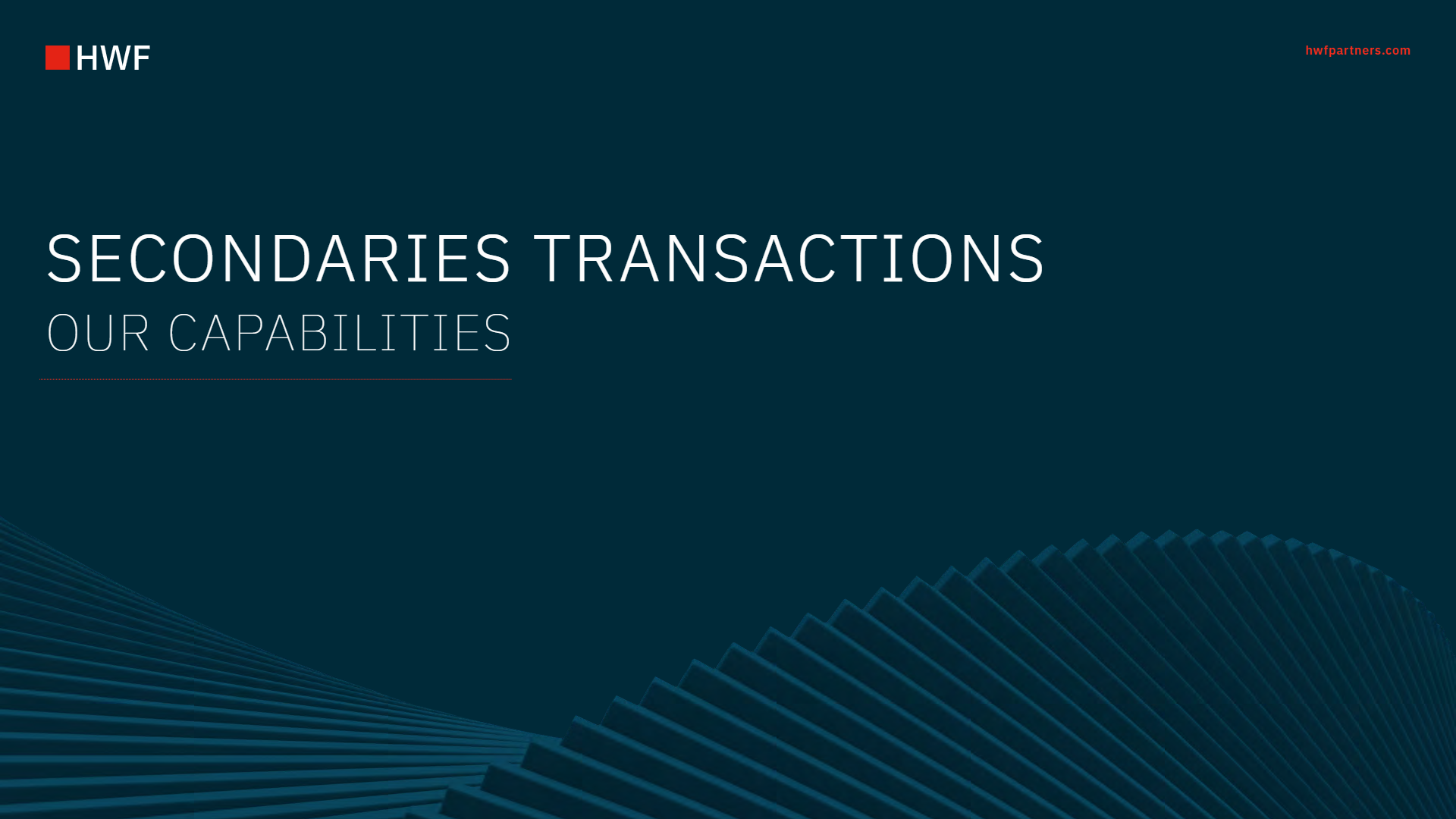M&A Insurance & Secondaries Transactions
Secondaries transactions are continuing to increase in volume. Coverage of such transactions – whether LP led, GP led or preferred equity financings – is now a well established feature of the M&A insurance market. Many insurers now possess the dedicated capabilities required to service client needs in this area.
Why insure secondaries?
Having placed insurance policies on some of the first secondaries transactions to be insured in the M&A insurance market, the team at HWF in both Europe and the US have continued to build extensive experience across a range of secondaries transactions, including both GP and LP led transactions and fund-of-funds transfers.
Cleaner Exit
No tail liabilities for selling fund and comfort of collectability for buying fund, as insurers are regulated companies with strong balance sheets.
Broad Cover
Coverage of excluded obligations and clawback indemnities again facilitates clean exits, gives broad cover and allows winding up of historic fund structures.
Release of Proceeds
Earlier distribution of proceeds to LP with no holdbacks.
Relationship Preservation
LPs/GPs preserve valuable relationships as recourse for disputes sits with insurers.
Streamlined Negotiations
Saving time and cost of negotiations in a process, and allowing parties to focus on key commercial items.
Management Expectation
If management of underlying portfolio businesses are involved in the sale process, W&I protection aligns with their expectations on an arm’s length sale process.
What drives secondaries insurance coverage?
Scope of cover will be deal specific and driven by factors including the nature of the transaction, its structure and the number of portfolio assets concerned. Key areas driving coverage will include:
Due Diligence
If a suite of M&A style warranties is required, insurers will expect ordinary course DD akin to a primary M&A deal with a similar process to W&I insurance. At the other extreme, typically where an interest in a large portfolio of assets is transferring and typical secondaries warranties akin to title and capacity fundamental warranties are being given, insurers will be comfortable with more limited DD or just a Q&A process and underwriting call. Early engagement with HWF to understand available materials will allow us to advise on DD required to achieve coverage expectations.
Warranties
Scope of warranties will be dictated by (i) parties’ requirements and (ii) available diligence. Traditionally, warranties on secondaries transactions were limited in nature and scope, primarily focusing on title to the fund interest, ability to sell the interest etc. This remains the case on deals with multiple underlying assets, or a more fulsome suite of warranties may be given on a knowledge qualified basis. However, as the market has grown (particularly on single asset deals) we’ve seen increased use of M&A style warranties, in which case insurers require more fulsome DD.
Managing Conflicts / Actual Knowledge
A GP running a fund will have material knowledge of the underlying fund assets. Issues within insured’s actual knowledge will be excluded from cover, so GP knowledge being imputed to the buy-side will be unacceptable to incoming LPs. As well as clean teams on the GP buy and sell side, as both GP and incoming LPs will typically be insured under a policy, knowledge of the GP and LPs needs to be several under the policy.
Excluded Obligations / Clawback Provisions
Failure to cover the excluded obligation indemnity (“EOI”) and clawback indemnity was historically a material hindrance to insurance on secondaries transactions, preventing a transferring fund from winding up. Various insurers are now able to cover the EOI and clawback indemnity, in many cases with limited or no additional diligence and relying instead on a Q&A exercise.
Contingent Risks
Alongside the general development of the contingent risk market, HWF are increasingly seeing contingent policies utilised to cover known risks which could arise in a secondaries context. This ensures a transferee fund is able to take on assets that are not pregnant with contingent liabilities, while on GP led-deals ensuring that any transferring fund can be wound up and funds distributed to LPs quickly and efficiently.
Our relevant experience
Our recent experience includes GP and LP led deals in the UK, Europe, Asia and MENA, with values of up to $1.5bn.


